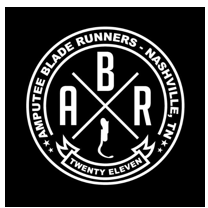Above Knee Amputation – (AKA) transfemoral amputation is where the leg is amputated through the thigh bone (femur) above the knee joint.
Below-Knee – (BKA) transtibial amputation is where the leg is amputated through the tibia approximately 15cm below the knee.
Disarticulation– this refers to the amputation being done through a joint. The hip, knee or ankle joint.
Partial Foot Amputation – transmetatarsal amputation is where the toes and part of the long bones of the foot are amputated.
Toe Amputation– Amputation where one or more toes are removed.
Other Common Terms to Know
Residual Limb (stump) – The remaining portion of the limb after amputation.
Shrinker Sock (stump shrinker) – An elastic compression sock that is sized to your residual limb. It is used to control swelling and encourage stump shrinkage. Often used a few days post-surgery in the place of an ace wrap.
Flexion Contracture- This is a shortening of the muscles at the affected joint. This can be avoided by exercising the limb and keeping it straight post surgery. Affects knee and hip joints.
Edema– Swelling of tissue.
Bulbous– This refers to stump being larger in circumference at the end then at the top.
Prosthetic Terms
Prosthetist – Healthcare professional primarily responsible for designing, fitting, fabricating, adjusting and maintaining the artificial limb.
Prosthesis – An artificial limb.
Preparatory (training) Prosthesis– This is a temporary prosthesis that is used to help reduce swelling, shape and desensitize the stump as well as learn to walk with the prosthesis. It will be the first prosthesis an amputee will use.
Definitive Prosthesis – This is the permanent prosthesis, that is followed by the preparatory one and it is designed to last for several years.
Functional Level – This is a process where a physical therapist or prosthetist try to predict the activity level you’re most likely to achieve in order to choose the most efficient prosthetsis for you. How it is decided what kind of leg you will get.
Plaster Impression – The plaster cast that is applied to the residual limb in order to obtain an accurate model during the fabrication process.
Prosthetic Components – The parts that make up the artificial limb. (foot, ankle, socket)
Prosthetic Socks – Socks worn over the residual limb inside of the prosthetic socket. The sock reduces the friction between the residual limb and the socket. It also replaces lost volume in the socket due to shrinking of the residual limb.
Socket – The portion of the prosthesis that is in contact with the residual limb.
Pylon – This is the pipe-like structure used to connect the prosthetic socket to the foot/ankle components.
Alignment – The relationship of the prosthetic foot to the socket.

